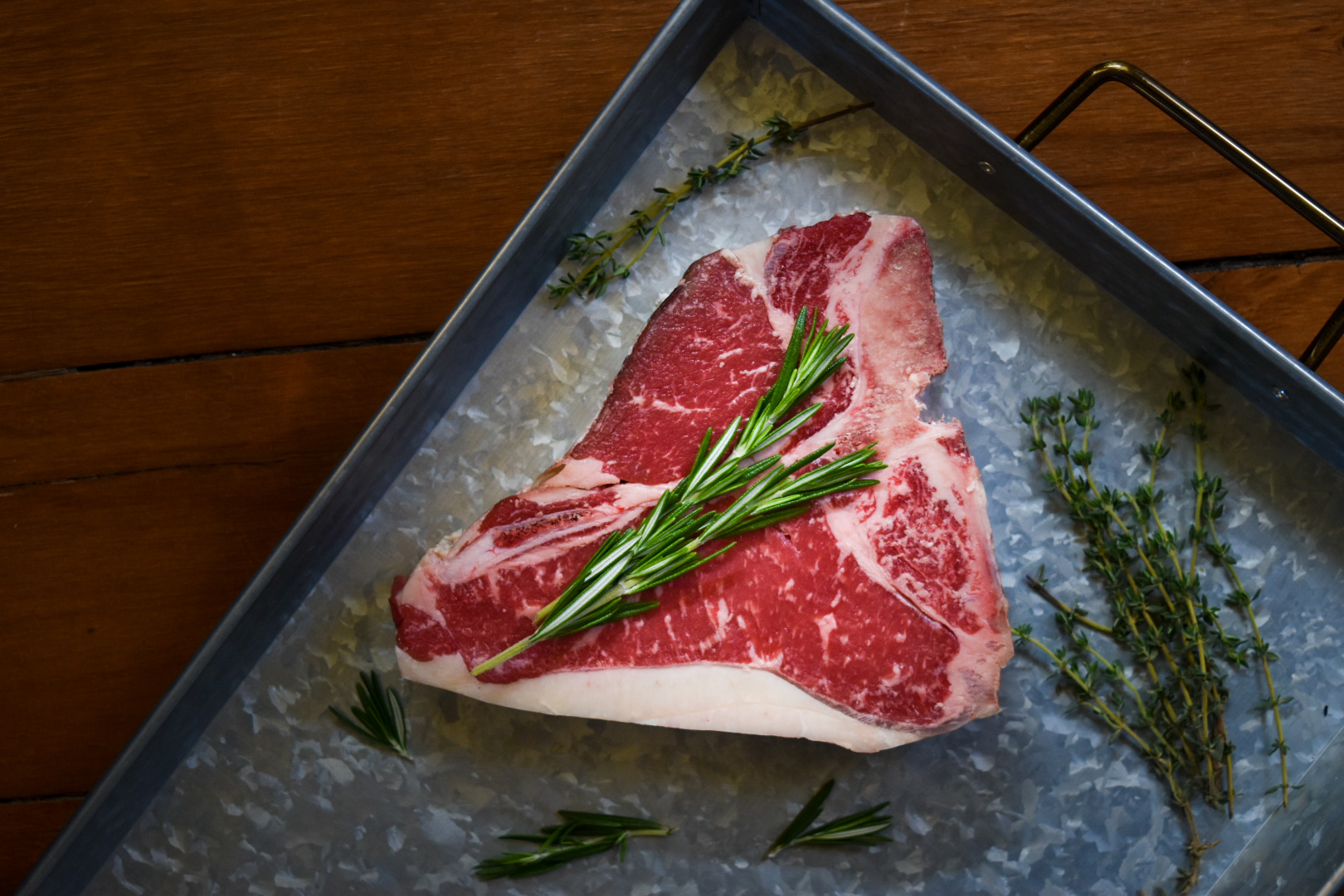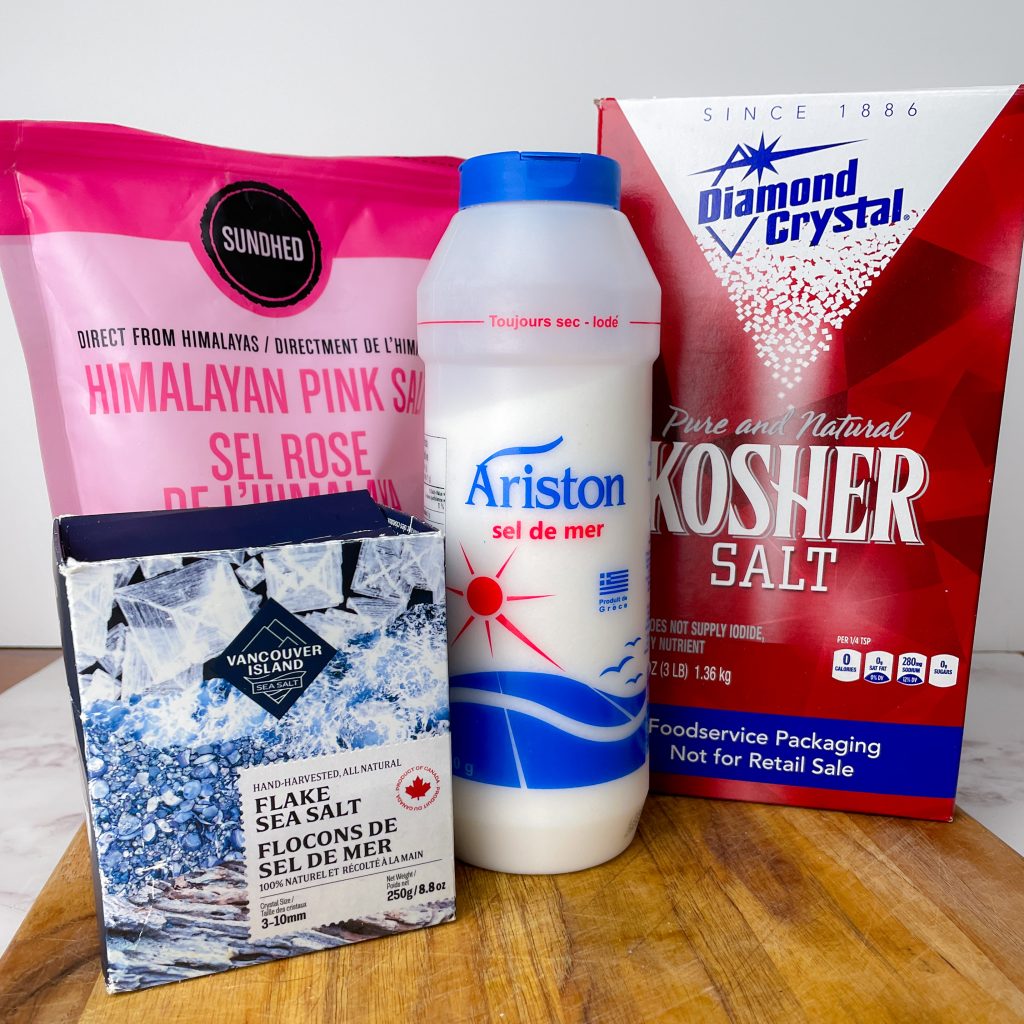A sizzling T-Bone Steak on the grill with a beer in hand is one of the best parts of summertime. And we want you to have the best experience with this cut of beef. That’s why we’re sharing all our butcher insider knowledge and basic T-Bone recipe with you on this highly prized cut of beef.
So, first things first…
Is T-bone a Good Steak?
Absolutely! And if you love great steaks you may want to check out our post on Tomahawk Steaks!
A T-Bone Steak has all the things going for it, including the showy bone that divides 2 premium and very popular steaks on either side.
Which probably leaves you wondering…
What is The Price of a T-Bone Steak?
The price of a T-Bone Steak is well worth it for the pleasurable eating experience. If you’ve never tried it before, what are you waiting for??
The price of the T-Bone Steak is dictated by its weight, which is a result of the thickness and circumference of the steak. Your butcher has control of 1 of these (thickness) but not the other (circumference). Your butcher can cut your steaks to the thickness you desire.
The overall circumference of a steak is dictated by the size of the animal – not much your butcher can do about this unfortunately. As in nature, some cattle are huge, while others are smaller. Cattle are not uniform nor exactly the same size.
What Cuts of Meat Are in a T-Bone Steak?
The T-Bone Steak is comprised of the Striploin Steak and the Tenderloin Steak. You should have at least about a ½ inch of Tenderloin to be considered a T-Bone Steak. The Tenderloin tends to get smaller as you move towards the front of the animal, until it tapers off completely leaving you with the “Wing Steaks”, otherwise known as Bone-In Striploin Steaks.
If you move along the short loin towards the rear of the animal, the T-Bone Steaks become larger until you reach the Porterhouse Steaks.
Porterhouse Steaks vs T-Bone Steaks
The Porterhouse Steak is a large version of the T-Bone and your butcher will be able to cut about 3 – 4 Porterhouse from 1 short loin (depending on the thickness). The Tenderloin on the Porterhouse must be at least 1.25 inches to be considered a Porterhouse Steak.
The Porterhouse Steak is desirable for the large size of the Tenderloin. However, bigger isn’t always better, as the Porterhouse tends to have some tough sinuous fibre running on the outside of the Striploin.
How Many People Does a T-Bone Steak Serve?
A T-Bone Steak typically feeds one person, however given the sometimes-massive size of this steak, they can easily be split between 2 people. Sharing is particularly easy if one prefers the Tenderloin Steak and the other prefers the Striploin Steak!
Is T-bone Better Than a Ribeye?
Let’s compare these popular steak cuts: T-Bone (Striploin and Tenderloin) vs the Ribeye. The Ribeye Steak is cut from the Rib section of the carcass, with the bone removed. When keeping the bone intact, the steak is called a Prime Rib Steak. The Ribeye tends to be fattier which lends itself to more flavour. In contrast, the Striploin and even more so the tenderloin of the T-Bone tend to be leaner cuts.
When comparing these steaks, we can also consider the fact that one has a bone (T-Bone Steak) and the other does not (Ribeye). A bone tends to impart flavour into the meat if that’s something you are looking for. Although some prefer boneless meats for the ease of serving to guests.
So which is better, T-Bone or Ribeye? It all comes down to personal preference!
Buying and Selection of the T-Bone Steak
“It’s simple. Great ingredients make great food.” In other words, don’t start with a poor quality piece of meat. Head to your local butcher to get a fresh T-Bone, cut just to your liking. Look for Angus beef if it’s available. Angus Beef is well known for its marbling and flavour.
Inquire about dry-aged meat. This process naturally concentrates the flavour and tenderizes the meat for a better experience. A nice age is about 21 days, but occasionally you can find meats aged up to 100 days +.
We recommend at least 1 inch thickness to prevent the overcooking that can occur with thin steaks. Occasionally, we get requests for steaks up to 1.5 to 2 inches, and rarely 3 inches. At some point, you may classify it as a roast!
How Do I Cook a T-Bone Steak?
So, you’re ready to cook that T-Bone Steak? Don’t panic, we’ve got you covered. Pan-seared and oven-finished is arguably the best method for cooking steak. It caramelizes the steaks nicely for a ton of flavour. I’ll admit it’s my favourite method and I will eagerly pull out my cast iron pan to do it. However, pan-seared isn’t the best all the time.
For one thing, you really need to open the windows and turn the fans on because it gets smoky. And secondly, when the weather is beautiful outside and friends are over (one-day!), who wants to be couped up in the kitchen?
So that’s why we are talking today about how to cook a T-Bone on the grill.
T-Bone Steak Marinade
We tend to be purists when it comes to a really good quality piece of meat. Why hide all that delicious beefy flavour in a marinade? We aren’t completely against marinades…they definitely have their place. Just maybe not on a dry aged, well marbled, premium steak like a T-Bone Steak.
And so you’ll be wondering…
How to Season a T-Bone Steak?
We tend to keep it simple with sea salt and freshly cracked pepper. Adding herbs like rosemary and thyme, along with garlic are a wonderful compliment to the beefy flavour. Another nice touch is a dollop of real butter or even compound butter as you finish the steak.
What is Carry-Over Cooking?
This is a phenomenon in which your meats continue to rise in temperature after being removed from the heat source. To prevent over-cooking your meats, be sure to remove your steaks from the heat when they are about 5°F below the final temperature.
How Long to Cook a T-Bone Steak?
How long to cook your T-bone steak depends on your trusty instant-read thermometer! Here are grilling temperatures to aim for (factoring in the carry-over cooking).
Rare beef is grilled to about 115-120°F for a serving temperature of 125°F.
Medium-rare beef is grilled to about 120-125°F for a serving temperature of 130°F.
Medium beef is grilled to about 130-135°F for a serving temperature of 140°F.
Medium-well beef is grilled to about 140-145°F for a serving temperature of 150°F.
Well-done beef is grilled to about 150-155°F for a serving temperature of 160°F.
Grilled T-Bone Steak Recipe
There are many ways to cook a steak including pan-fried, reverse seared, sous-vide and more. For today, we are talking about that classic way of grilling a steak; seared over direct heat and finished over indirect heat. Here is our basic T-Bone Steak Recipe:
- Take the chill off: Remove steaks from the fridge and bring them to room temperature (1 – 2 hours before cooking).
- Get the grill hot: Turn your grill on high heat and let it rise up to temperature (about 15-20 minutes). Be sure to clean your grates.
- Season your steaks: Pat the steaks dry with paper towels. Brush the steaks with oil such as olive oil or grapeseed oil. Generously season with freshly cracked pepper and sea salt, including the sides of your steaks.
- Get that sear! Place the steaks directly on the hottest side of the grill with the tenderloin facing the cooler side of the grill. Leave undisturbed until brown and slightly charred, approximately 4-5 minutes. Flip the steaks to grill for another 3-5 minutes (again keeping the tenderloin facing the cooler side of the grill). If you are looking for those classic crosshatch marks, be sure to rotate your steaks at a 45 degree halfway through searing each side.
- Indirect Cooking: Thicker cut steaks may require more cooking time to achieve your desired doneness. To prevent the steaks from charring, move the steak to the cooler side of the grill to continue cooking on indirect heat.
- Cooking Time & Doneness: Use an instant-read thermometer to check if your steaks are done to your liking. Remember that the temperature of your steaks will continue to rise after being removed from heat. We suggest removing your steaks from the grill when they are 5°F below the final desired temperature. For medium-rare steaks, remove them from the grill when they are 120°F, loosely tent them with foil and let them rest for 10 minutes. Resting will allow the juices to move back into the steak.
- Enjoy! Slice the steaks and season with salt and pepper to taste. Serve with compound butter, if desired.









